Abstract
This paper describes a system for structured data collection and report generation in abdominal ultrasonography. The system is based on a controlled vocabulary and hierarchies of concepts; it uses a graphical user interface. More than 17,000 reports have been generated by 43 physicians using this system, which is integrated into a departmental information system. Evaluations have shown that it is a well accepted tool for the fast generation of reports of comparatively high quality. The functionality is enhanced by two additional components: a hybrid knowledge-based module for "intelligent" user guidance and an interactive tutoring system to illustrate the terminology.
Full text
PDF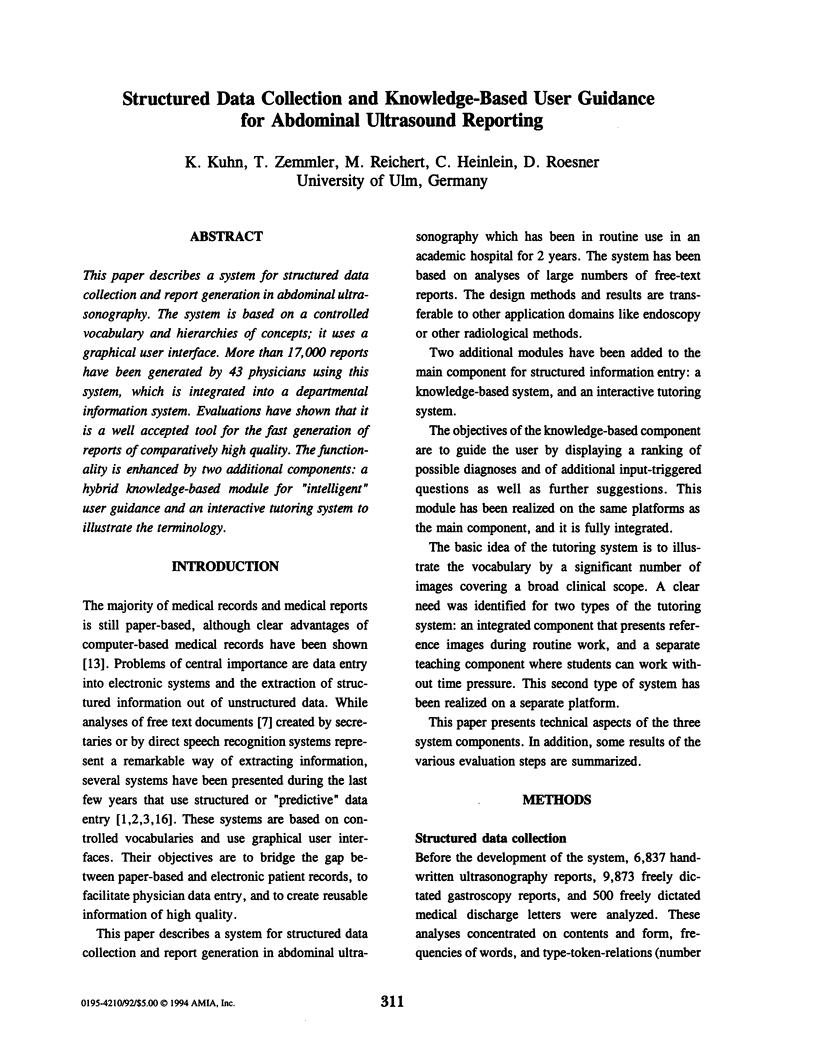
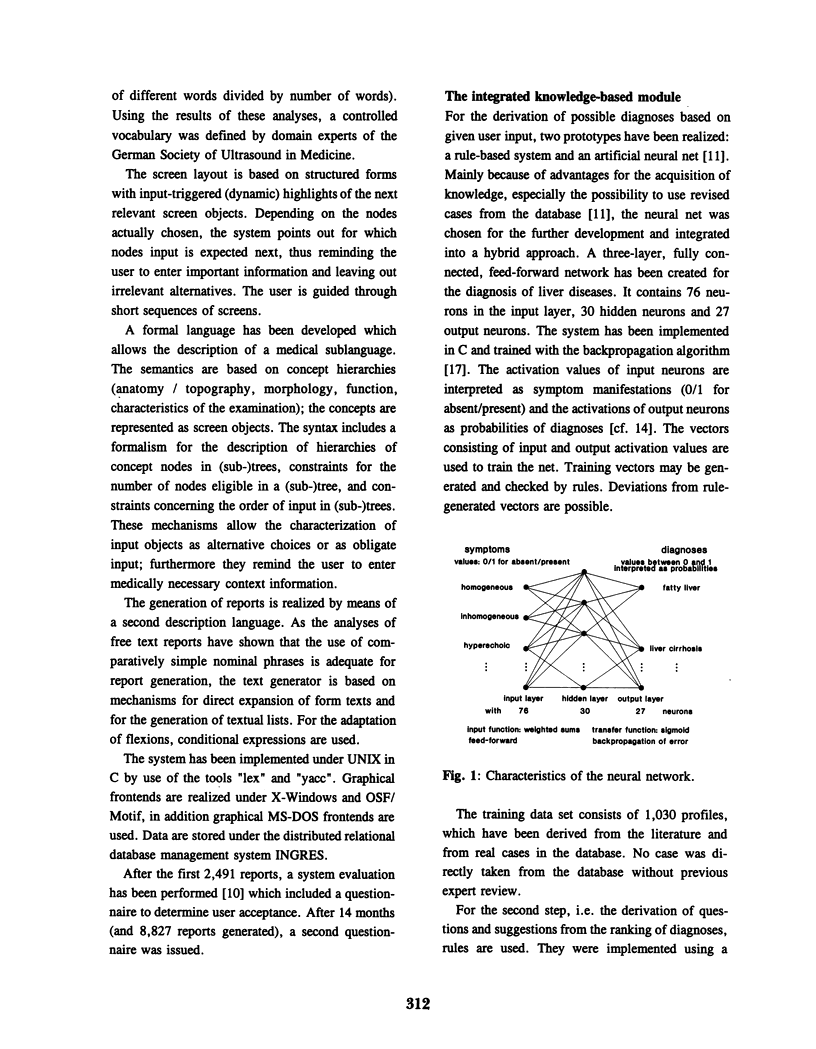
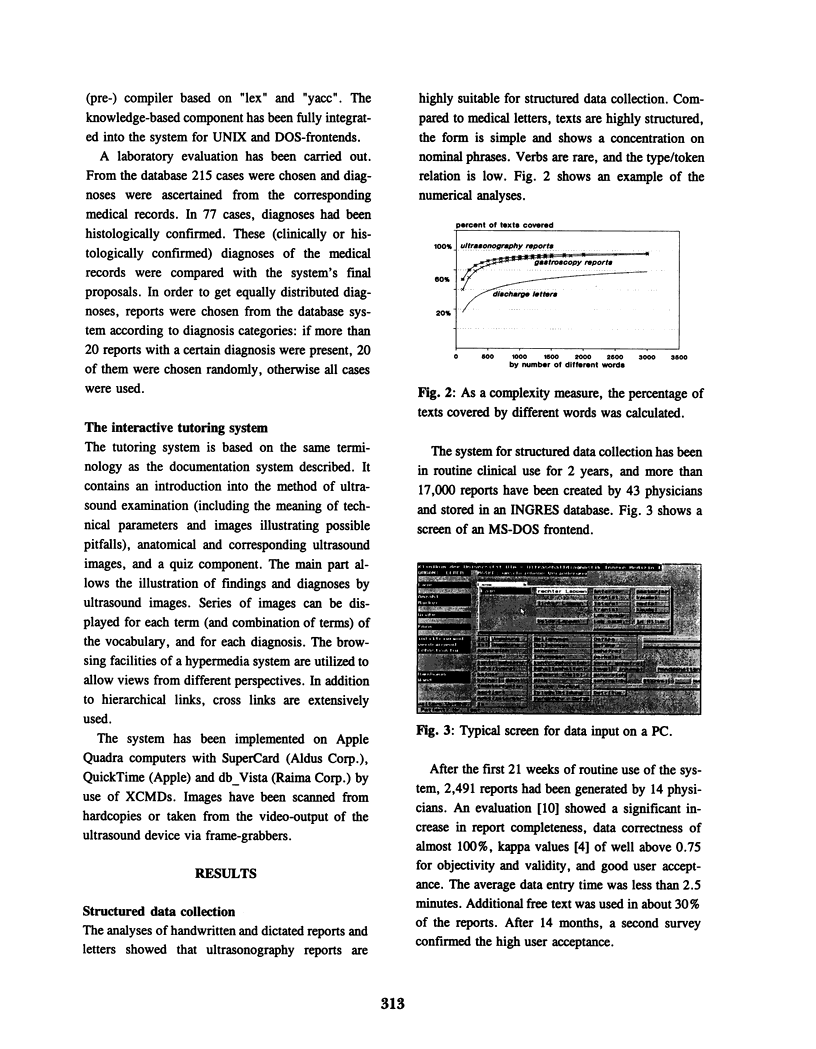
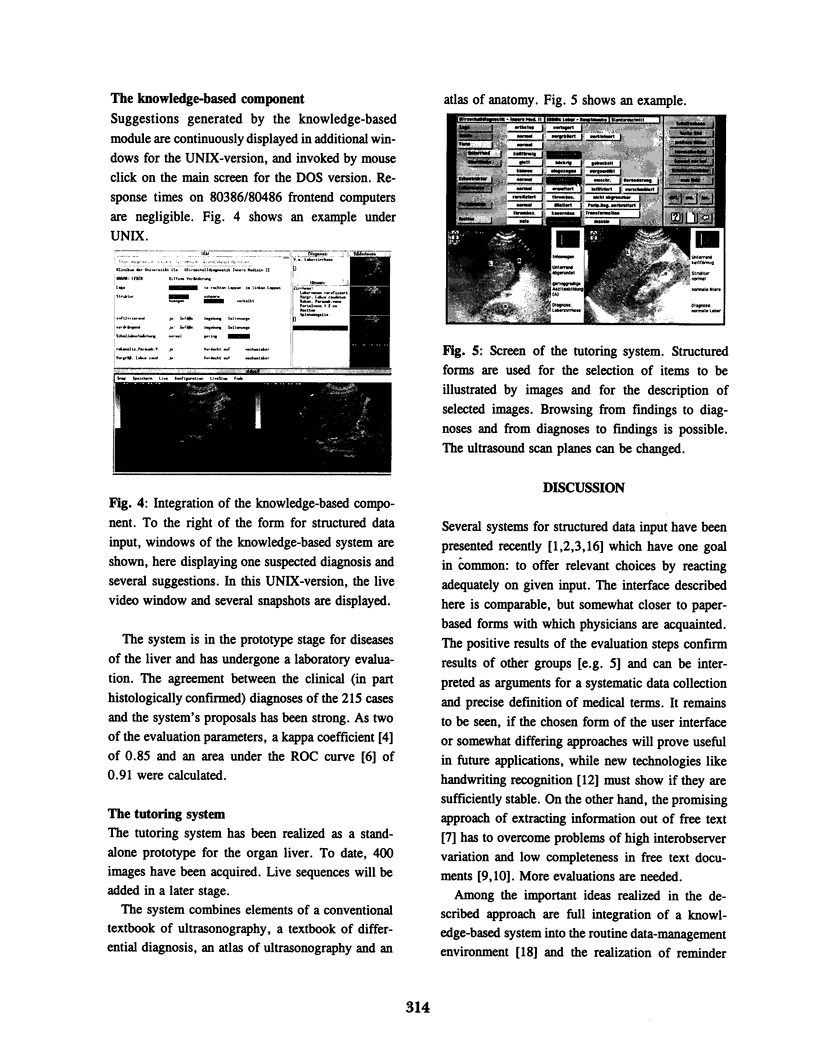
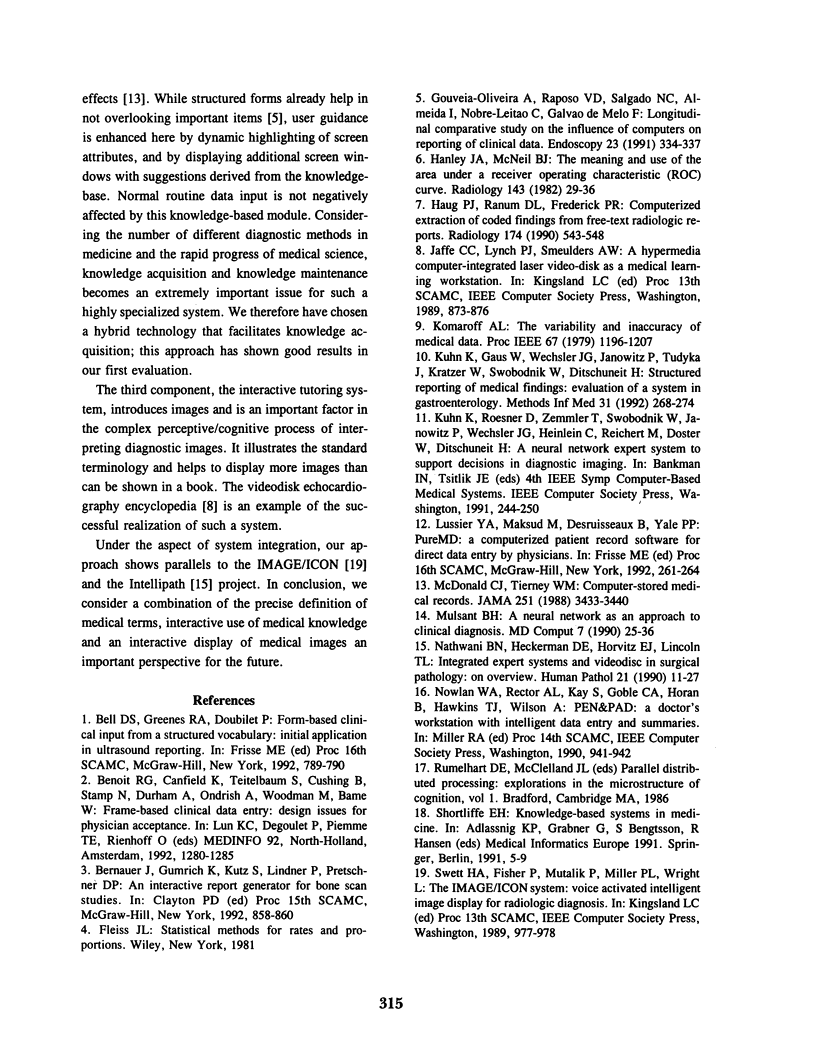
Images in this article
Selected References
These references are in PubMed. This may not be the complete list of references from this article.
- Bell D. S., Greenes R. A., Doubilet P. Form-based clinical input from a structured vocabulary: initial application in ultrasound reporting. Proc Annu Symp Comput Appl Med Care. 1992:789–790. [PMC free article] [PubMed] [Google Scholar]
- Gouveia-Oliveira A., Raposo V. D., Salgado N. C., Almeida I., Nobre-Leitão C., de Melo F. G. Longitudinal comparative study on the influence of computers on reporting of clinical data. Endoscopy. 1991 Nov;23(6):334–337. doi: 10.1055/s-2007-1010710. [DOI] [PubMed] [Google Scholar]
- Hanley J. A., McNeil B. J. The meaning and use of the area under a receiver operating characteristic (ROC) curve. Radiology. 1982 Apr;143(1):29–36. doi: 10.1148/radiology.143.1.7063747. [DOI] [PubMed] [Google Scholar]
- Haug P. J., Ranum D. L., Frederick P. R. Computerized extraction of coded findings from free-text radiologic reports. Work in progress. Radiology. 1990 Feb;174(2):543–548. doi: 10.1148/radiology.174.2.2404321. [DOI] [PubMed] [Google Scholar]
- Kuhn K., Gaus W., Wechsler J. G., Janowitz P., Tudyka J., Kratzer W., Swobodnik W., Ditschuneit H. Structured reporting of medical findings: evaluation of a system in gastroenterology. Methods Inf Med. 1992 Nov;31(4):268–274. [PubMed] [Google Scholar]
- Lussier Y. A., Maksud M., Desruisseaux B., Yale P. P., St-Arneault R. PureMD: a Computerized Patient Record software for direct data entry by physicians using a keyboard-free pen-based portable computer. Proc Annu Symp Comput Appl Med Care. 1992:261–264. [PMC free article] [PubMed] [Google Scholar]
- McDonald C. J., Tierney W. M. Computer-stored medical records. Their future role in medical practice. JAMA. 1988 Jun 17;259(23):3433–3440. [PubMed] [Google Scholar]
- Mulsant B. H. A neural network as an approach to clinical diagnosis. MD Comput. 1990 Jan-Feb;7(1):25–36. [PubMed] [Google Scholar]
- Nathwani B. N., Heckerman D. E., Horvitz E. J., Lincoln T. L. Integrated expert systems and videodisc in surgical pathology: an overview. Hum Pathol. 1990 Jan;21(1):11–27. doi: 10.1016/0046-8177(90)90071-c. [DOI] [PubMed] [Google Scholar]




